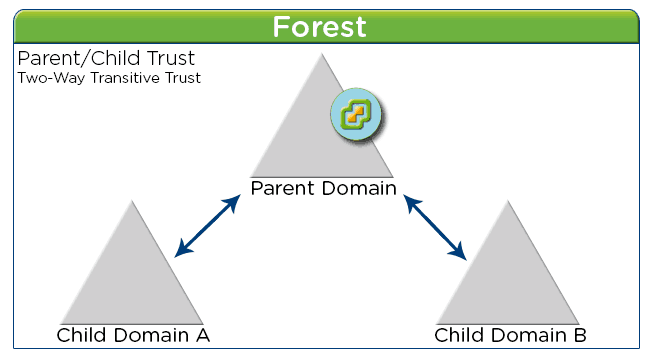In the world of network architecture, a parent domain serves as the foundation upon which subdomains, known as child domains, are built. In this article, we will explore the concept of a parent domain, its significance in network organization, and its relationship with child domains. Understanding the parent domain is crucial for administrators and network engineers seeking to design scalable and efficient network infrastructures.

Defining the Parent Domain
A parent domain is a fundamental component within a network’s domain tree structure. It forms the basis for the creation of subdomains or child domains. Put simply, the DNS name of the parent domain serves as the starting point for establishing related subdomains that inherit its name structure. For example, consider the parent domain “microsoft.com.” This parent domain can give rise to subdomains such as “dev.microsoft.com,” “marketing.microsoft.com,” and “support.microsoft.com.”
Establishing Hierarchy
The parent domain plays a pivotal role in establishing a hierarchical structure within a network. By creating a parent domain, network administrators can organize and categorize various aspects of their network infrastructure. This hierarchy aids in resource management, access control, and administrative responsibilities. As a result, networks can be efficiently segmented, facilitating easier administration and improved security.
Relationship with Child Domains
The parent domain shares a close relationship with its associated child domains. A two-way transitive trust exists between a parent domain and its child domains, enabling seamless communication and authentication across the network. This trust relationship allows users and resources within a child domain to access resources in the parent domain and vice versa. For instance, users in the child domain “dev.microsoft.com” can access shared resources in the parent domain “microsoft.com” as needed.
Parent Domain Example
Let’s consider a practical example to illustrate the concept of a parent domain. Imagine a large organization with multiple departments, each requiring its own domain for efficient management. The parent domain, “organization.com,” serves as the overarching domain, while the child domains, such as “sales.organization.com,” “finance.organization.com,” and “hr.organization.com,” represent distinct departments. This hierarchical structure allows for independent administration while maintaining centralized control through the parent domain.
Conclusion
The parent domain plays a crucial role in network organization and management. It forms the foundation for the creation of subdomains, enabling the hierarchical structuring of network resources. With its two-way transitive trust relationship, the parent domain establishes seamless communication and authentication between itself and its associated child domains. By understanding the significance of the parent domain, network administrators can design scalable and secure network infrastructures that effectively cater to the needs of their organization.
What is Parent Domain (Microsoft Windows Server domain tree)?
Parent Domain is a domain in a Microsoft Windows Server domain tree whose Domain Name System (DNS) name forms the basis of subdomains called child domains. For example, the parent domain named microsoft.com could include three child domains named dev.microsoft.com, marketing.microsoft.com, and support.microsoft.com. A two-way transitive trust exists between a parent domain and its associated child domains.